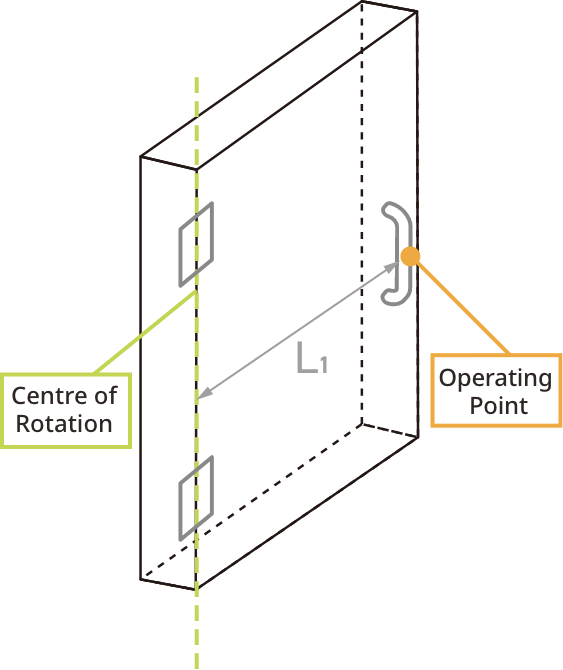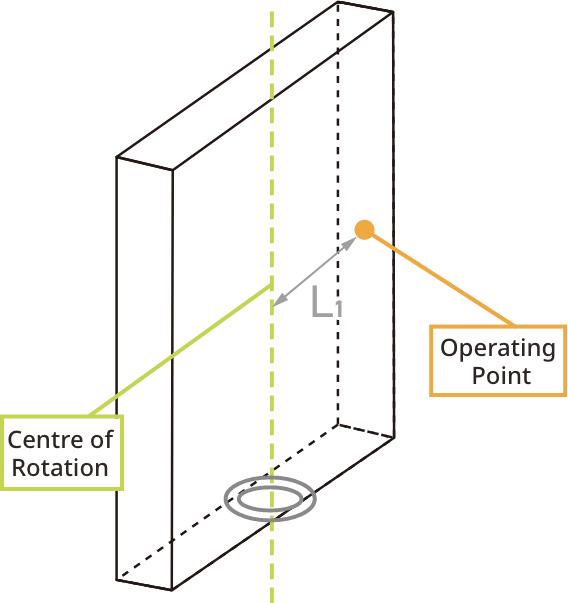The Basics of Damper Stays
This page introduces the basics of damper stays: their mechanism, different available types, and how to use them.
Try out our damper hinge / stay selection tool when you are ready to choose.
What Is a Damper Stay?
What Is a Damper Stay?
A damper stay, also known as a slow-down stay or soft-down stay, allows for doors and lids to be opened and closed slowly. The slow opening function is called Soft Open, and the slow closing function is called Soft Close or Soft Down.
By controlling the speed of opening and closing, damper stays not only reduce noise and impact but also add a sense of luxury to the movement of your furniture or equipment. Additionally, they enhance safety by reducing the risk of finger pinching.
Why Does It Move Slowly? - The Structure of a Damper Stay

Most of our damper stays incorporate our unique Lapcon damper mechanism, which functions with the use of a viscous fluid. This is why they are also referred to as Lapcon Stays.
Their soft-close function works via the resistance of this viscous fluid.
Key Points When Selecting Hinges and Stays

Orifice Configuration
Resistance is generated when the viscous fluid flows from a wider chamber to a narrower one.

Shear Configuration
Resistance is generated when plates with a viscous fluid in between them are moved.
Types of Damper Stay
Door Openings Compatible With Damper Stays

Downward Opening (Flap Down)

Upward Opening (Flap Up)

Top Opening

Bottom Opening

Vertical Upward Opening

Vertical Downward Opening

Swing Upward Opening

Horizontal Folding

Horizontal Retracting
Downward opening is often used for doors located below eye level, such as television stands, while upward opening is used for doors located above eye level, such as kitchen wall cabinets. Top opening lids are frequently employed on the lids of bench storage or toy boxes.
Types of Damper Stay
Standard Damper Stay

This type is installed on side panels and doors.
Easy-to-Install Damper Stay

Simply align the stay with the end of a surface to determine the installation position, eliminating the need for troublesome positioning.
Damper Stay Combined With
Concealed Hinge

Installing this stay over a concealed hinge consolidates the hinge and damper stay—previously separate components—into a single unit.
Damper Stay for Countertops

This damper stay is ideal for flip-up countertop panels. It ensures smooth and quiet closing even at small opening angles.
Wire Damper Stay

A wire-type damper stay designed to minimise visual presence.
Multifunctional Damper Stay

This stay not only incorporates a soft-close feature, but also a lift-assist function for gently opening doors, and a free-stop function that allows doors to be held securely in any desired position.
Selecting Damper Stays
Have you ever had a door slam shut even though you've installed a damper stay on it? This can happen if you choose the wrong damper stay for the weight and size of the door. Choosing the right product is essential for achieving soft-close movement.
For example, if a stay with weak resistance is installed on a large and heavy door, the door may still slam shut; conversely, if the door is small and light, but the stay has strong resistance, it might stop midway.
Selecting a damper stay is done based on the door or lid's moment.
Door Openings Compatible With Damper Stays
The moment of a door or lid refers to the force that causes an object to rotate around a certain point.
The moment varies depending on the angle the door is opened to, as shown in the diagram. The amount of force required to rotate a door increases the nearer the door gets to being horizontal to the ground, and decreases the closer it gets to being vertical.
When selecting a damper stay, it's crucial to choose one that matches the maximum moment of the door or lid. See below for a concrete example.

Open at a 10° angle
Less force required to rotate the door

Open at an 80° angle
More force required to rotate the door

If you select a damper stay to match this angle, where the moment is smaller...

The door will not be able to withstand the larger moment when the opening angle increases, and it will fall open.
In other words, selecting a damper stay that matches the maximum moment of the door's range of opening angles means that the door will open slowly at any angle, hands-free.
The formula for calculating the maximum moment is as follows.
centre of rotation to centre of gravity
Door's Centre of Gravity

The centre of gravity for a single panel door made from a uniform material can be determined by dividing the door's length by 2.
Products with Adjustable Damper Force
With some of our products, such as the Soft-Down Stay NSDX Series and the CSD-10-TV, damper force can be adjusted after installation.
This not only allows for adjustments to a door's opening and closing speed, but it also means these products can be used with a wider range of door sizes and weights when compared to other stays.
Eliminate the hassle of moment calculations
with our selection tool!
Use our MDT Selection Tool to choose products that suit your needs, just by entering the distance to the centre of gravity and the mass of the lid.



